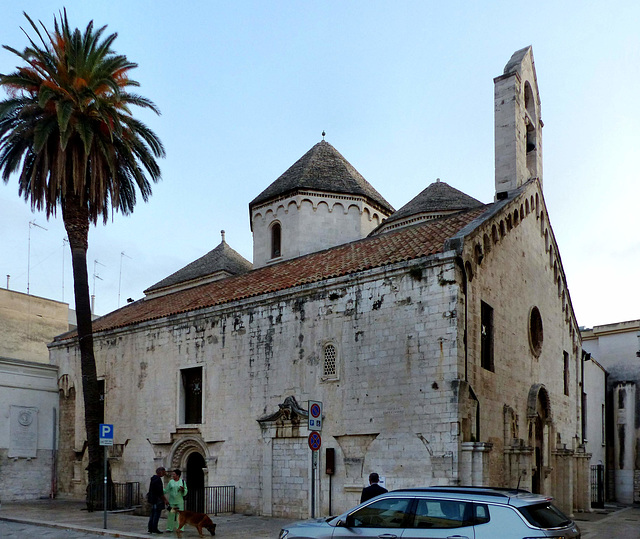Trani - Chiesa di Santa Teresa
Trani - Chiesa di Ognissanti
Trani - Chiesa di Ognissanti
Trani - Chiesa di Ognissanti
Trani - Chiesa di Ognissanti
Trani - Chiesa di Ognissanti
Trani - Chiesa di Ognissanti
Trani - Chiesa di Ognissanti
Barletta - Il Castello
Barletta - Colosso di Barletta
Barletta - Basilica del Santo Sepolcro
Barletta - Basilica del Santo Sepolcro
Barletta - Chiesa di Sant'Andrea
Barletta - Chiesa di Sant'Andrea
Barletta - Duomo di Barletta
Barletta - Duomo di Barletta
Barletta - Duomo di Barletta
Barletta - Duomo di Barletta
Barletta - Duomo di Barletta
Barletta - Duomo di Barletta
Barletta - Duomo di Barletta
Barletta - Duomo di Barletta
Barletta - Duomo di Barletta
Trani - Cattedrale di San Nicola Pellegrino
Trani - Cattedrale di San Nicola Pellegrino
Trani - Cattedrale di San Nicola Pellegrino
Trani - Cattedrale di San Nicola Pellegrino
Trani - Cattedrale di San Nicola Pellegrino
Trani - Cattedrale di San Nicola Pellegrino
Trani - Cattedrale di San Nicola Pellegrino
Trani - Cattedrale di San Nicola Pellegrino
Trani - Cattedrale di San Nicola Pellegrino
Trani - Cattedrale di San Nicola Pellegrino
Trani - Cattedrale di San Nicola Pellegrino
Trani - Cattedrale di San Nicola Pellegrino
Trani - Cattedrale di San Nicola Pellegrino
Trani - Cattedrale di San Nicola Pellegrino
Trani - Cattedrale di San Nicola Pellegrino
Trani - Cattedrale di San Nicola Pellegrino
Trani - Cattedrale di San Nicola Pellegrino
Trani - Cattedrale di San Nicola Pellegrino
Trani - Cattedrale di San Nicola Pellegrino
Trani - Cattedrale di San Nicola Pellegrino
Trani - Cattedrale di San Nicola Pellegrino
Trani - Cattedrale di San Nicola Pellegrino
Location
See also...
Keywords
Authorizations, license
-
Visible by: Everyone -
All rights reserved
-
59 visits
Trani - Chiesa di San Francesco


Trani may have been founded by Greek settlers, but the known history starts late. After the fall of the Western Roman Empire, it was dominated by Lombards, Byzantines, Saracens and again Byzantines. With the conquest of southern Italy by the Normans and after 50 days of siege by Robert Guiscard´s troops, Trani became part of the Norman Empire in 1073.
Already under the Byzantines, Trani had become an important port for trade with the Orient. The heyday was in the time of the crusades in the 12th and 13th centuries, when crusaders and merchants mainly went to the Holy Land from Bari and Trani. It became an episcopal see in place of Canosa, destroyed by the Saracens. Frederick II promoted the Teutonic Knights and the Jewish community and built a massive castle. Under his rule, the city reached its highest point of wealth and prosperity.
The church, once dedicated to the Holy Trinity and consecrated in 1184, was founded by Benedictines. The buildings of the adjacent monastery now host the municipal library. The monastery was located outside the city walls at that time, but neighbouring a busy street and part of an urban agglomeration. Emperor Frederick II enlarged the city walls within the 13th century so that the church and the surrounding area were within the walls at the entrance of the city.
In 1537 the church and the monastery passed from the Benedictines to the Franciscans, after the old Franciscan convent had been destroyed during the Franco-Spanish wars. The church then changed its name, assuming the current one.
The church is one of the well-preserved Apulian Romanesque churches with three domes, like San Corrado di Molfetta.
Already under the Byzantines, Trani had become an important port for trade with the Orient. The heyday was in the time of the crusades in the 12th and 13th centuries, when crusaders and merchants mainly went to the Holy Land from Bari and Trani. It became an episcopal see in place of Canosa, destroyed by the Saracens. Frederick II promoted the Teutonic Knights and the Jewish community and built a massive castle. Under his rule, the city reached its highest point of wealth and prosperity.
The church, once dedicated to the Holy Trinity and consecrated in 1184, was founded by Benedictines. The buildings of the adjacent monastery now host the municipal library. The monastery was located outside the city walls at that time, but neighbouring a busy street and part of an urban agglomeration. Emperor Frederick II enlarged the city walls within the 13th century so that the church and the surrounding area were within the walls at the entrance of the city.
In 1537 the church and the monastery passed from the Benedictines to the Franciscans, after the old Franciscan convent had been destroyed during the Franco-Spanish wars. The church then changed its name, assuming the current one.
The church is one of the well-preserved Apulian Romanesque churches with three domes, like San Corrado di Molfetta.
Fred Fouarge has particularly liked this photo
- Keyboard shortcuts:
Jump to top
RSS feed- Latest comments - Subscribe to the comment feeds of this photo
- ipernity © 2007-2024
- Help & Contact
|
Club news
|
About ipernity
|
History |
ipernity Club & Prices |
Guide of good conduct
Donate | Group guidelines | Privacy policy | Terms of use | Statutes | In memoria -
Facebook
Twitter

Sign-in to write a comment.